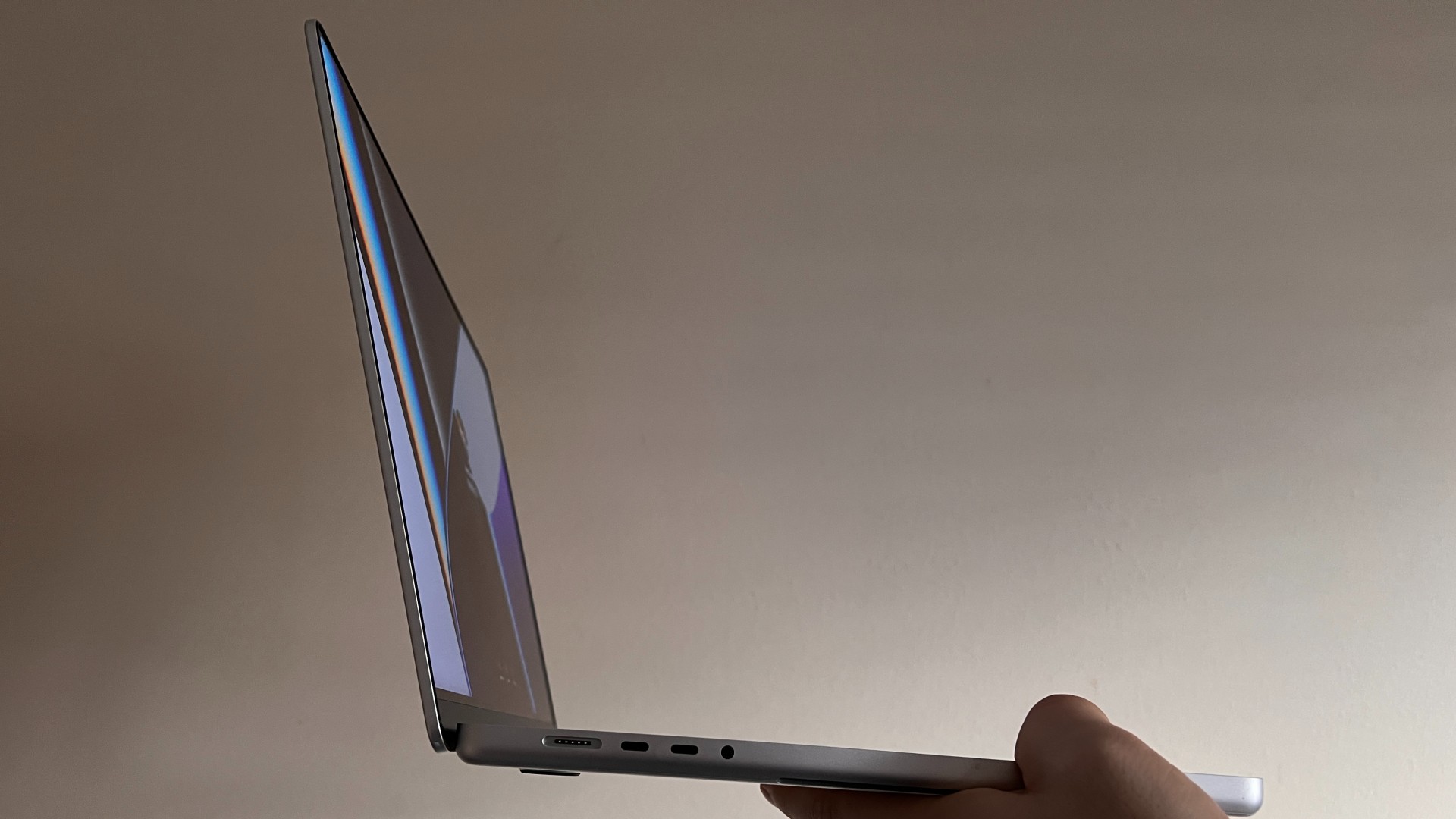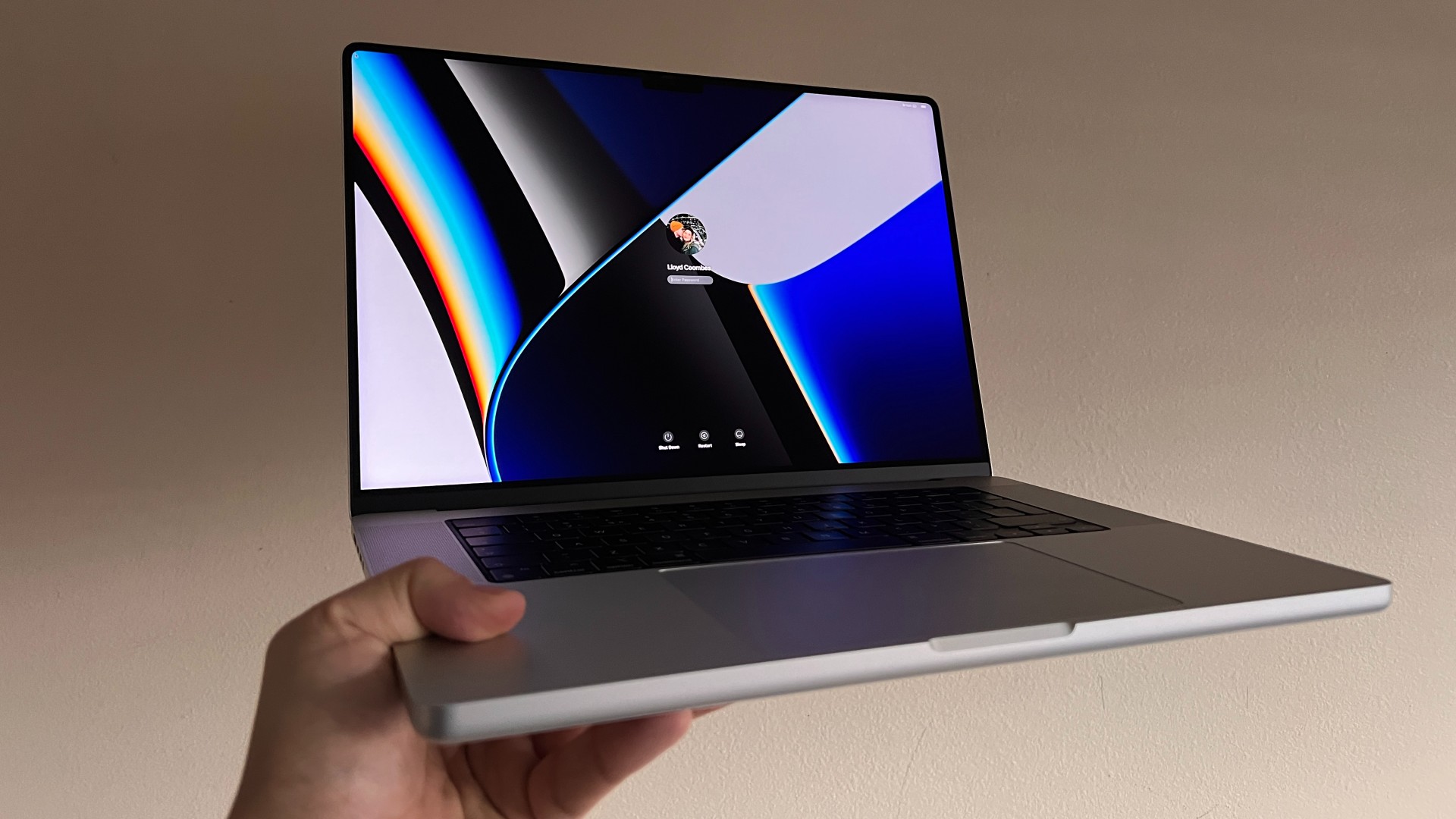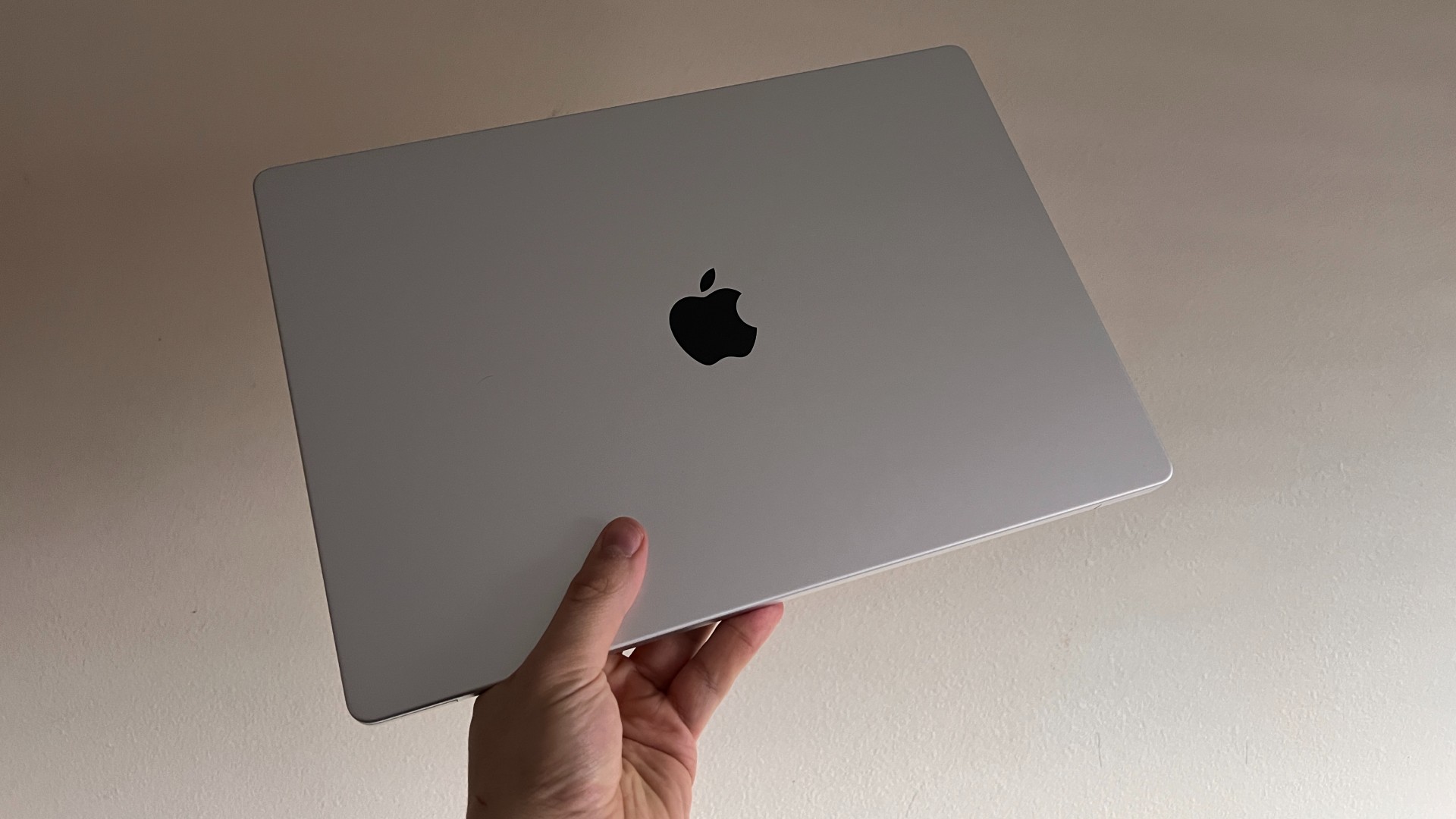Space Verdict
Apple’s latest MacBook Pro revision is its best yet, offering incredible performance and great battery alongside improved ports, the best laptop display we’ve seen, and a new camera. It's still mighty expensive though.
Pros
- +
New design
- +
Incredible display
- +
Most powerful Apple laptop ever made
Cons
- -
Chunkier than prior models
- -
Expensive
- -
Notch is an acquired taste
Why you can trust Space.com
Whether you're a skywatcher looking for something to edit their photos of the night sky on, or you just need something to watch sci-fi movies on, the Macbook Pro 16-inch is a fantastic laptop.
Apple’s M1 chip bought huge performance gains while extending the battery life of its MacBook Pro M1 13-inch model last year, but like the M1 MacBook Air, its exterior stayed more or less the same.
This year, it’s all changed on the design front – the new MacBook Pro (with M1 Pro or M1 Max chip) is a less portable device, at least in terms of its overall size, but is a much more capable one.
Processor: Apple M1 Pro chip 10-core CPU
Operating system: macOS Big Sur
Screen size: 16.2-inch (also available in 14.2-inch version)
Weight: 4.7 lbs (2.1 kg)
Memory: 16GB, 32GB or 64GB (32GB tested)
Battery life: up to 14 hours wireless web browsing
Storage: 512GB, 1TB, 2TB, 4TB, or 8TB versions
Display: Liquid Retina XDR display, 3456 x 2234, 1,600 nits peak brightness
Graphics: Integrated 16-core GPU
Ports: three Thunderbolt 4 (USB-C), MagSafe 3, HDMI 2.0, SD card slot, 3.5mm headphone jack
Function keys, an SD card reader, and MagSafe are all back, while the new Liquid Retina XDR display is the finest we’ve seen on a laptop yet, offering stunning brightness and up to 120Hz refresh rate thanks to ProMotion.
The notch that holds the camera is still here sadly, but we're willing to let that slide, especially since it now holds a 1080p webcam (that’s right, the 720p sensor is finally gone).
Then there’s the chip itself, which takes the baton from the M1 version and runs with it, offering huge performance gains across basic and more demanding tasks. Plus, you get all the M1 goodness, like compatible iOS and iPadOS apps and impressive battery life regardless of what you’re doing. All this definitely stacks up to make the MacBook Pro M1 16-inch one of the best laptops for photo editing.
Put simply, it’s the best MacBook that Apple has made, but, as expected, it does remain expensive.
Breaking space news, the latest updates on rocket launches, skywatching events and more!
MacBook Pro 16-inch review: Design
- Available in Silver or Space Gray
- Incredible new display
- Slightly thicker
While the core of the MacBook Pro's design hasn’t changed (it’s still an aluminum clamshell), there are plenty of differences from the last Intel version of the 16-inch MacBook Pro.
The first is that it’s thicker, with the base of the laptop a little bulkier, while the corners are also a little more square. This actually makes it look a little closer to the 2012 non-Retina version, which we hesitate to call retro lest we crumble to dust.
On the left-hand side, you’ll find a MagSafe port (allowing for the cable to pull away if someone trips over the cable), two USB-C ports (both USB 4.0 certified), and a headphone jack that now supports high-impedance headphones. On the right, there’s another USB-C port (also 4.0), an SD card slot, and an HDMI 2.0 port.

While you can charge the laptop through the MagSafe, those that enjoy “one cable” setups with USB-C docking stations that power their machines currently will be pleased to know you can still charge via USB-C. The 16-inch comes with a 140W charger, but you’ll have to pay extra for that on the 14-inch.
There’s the ubiquitous trackpad (still the best on the market) and a great, scissor-switch keyboard which is now found in a matte black tray. Still no sign of a matte black MacBook Pro, though, sadly. You’ll also find that punchy speakers reside on either side of the keyboard.
Finally, the display is big and beautiful, but we’ll get to that shortly. As we noted above, there is a notch that hangs down from the much smaller top bezel, but outside of apps with longer menu bars you’re unlikely to see it – and those menu bars simply flank it, anyway. The notch houses a 1080p FaceTime camera that’s a huge step up from prior models which were saddled with a 720p sensor.
MacBook Pro 16-inch review: Specs, performance, & features
- M1 Pro Chip is great for all kinds of tasks
- Impressive battery life given the power on offer
- Instant wake and iOS compatibility
The appeal of the transition for Apple customers is threefold – your Macs can run even more apps, they have more power, and they last longer. The M1 Pro does all of that, and it does it incredibly well.
In our testing, we were able to flit between apps, streaming services, and even games in an instant. In fact, even with dozens of apps open, we couldn’t get the fans to spin up, and that meant we also got an impressive 11 hours of battery life. You can expect even more if you’re using Safari instead of Chrome, or focus more on less intensive tasks like checking email and web browsing.

The M1 Pro in our review unit not only works hard, but it plays hard, too. We hit 70FPS on League of Legends (LoL), all running buttery smooth thanks to the ProMotion display that both increases and decreases the refresh rate depending on what you’re doing with it – and LoL isn’t even optimized for the M1 architecture.
The good news is that whether an app is Intel-based or M1-ready, it’ll run on the M1 Pro or M1 Max with no issue. When you first open the app, Apple essentially rewrites it for M1 using Rosetta 2, which happens so quickly you’re unlikely to even notice it. It never needs to do it again, and we saw impressive performance throughout all apps we tested – although most of the more popular macOS apps are already M1-ready.
The M1 being closer to iPhone and iPad chips brings two further improvements, and these are true for the M1 Pro, too; instant wake and iOS app compatibility. If the MacBook Pro is in sleep mode, or has the lid closed, you can hit a key or pop it open to have it instantly wake up. It’s iPhone/iPad-like, and means we’re more likely to use the Mac for tasks than ever before.
Then there’s iOS and iPadOS compatibility. While developers have to opt-in, you’ll see plenty of iPhone and iPad apps on the Mac App Store. Your mileage may vary, but we’ve seen shopping apps, banking apps, and plenty more that have been useful.
MacBook Pro 16-inch review: Image editing

- Photoshop optimized for M1 already
- Huge headroom for creative projects
- New screen is gorgeous
If you’re a creative with a visual workflow, you’re in for a treat. Not only will the MacBook Pro’s battery life mean you’re able to do more out and about without reaching for a charger, but the display brings your content to the fore in a way we’ve not seen on a laptop display before.
Based on Apple’s prohibitively expensive (but incredibly accurate) Pro Display XDR, the Liquid Retina XDR display here has a peak brightness of 1,600 nits which is incredibly bright. It also has a 1,000,000:1 contrast ratio so content absolutely pops.
The M1 Pro can apply filters and functions a whopping 3.3 times faster than the 13-inch Intel MacBook Pro, and that speed can be felt on more complex projects. You’ll also be pleased to know that it’ll now support two external displays, something the M1 version struggled with outside of some dongle usage.
All of this power stacks up to provide an excellent image editing experience, which makes this the perfect companion to go alongside one of the best cameras for astrophotographers.
MacBook Pro 16-inch review: User reviews
As you can imagine from the praise we’ve lavished on it thus far, there’s a lot to like about the MacBook Pro 2021 – but there are some pain points.
Some customers have been disappointed in the lack of USB-A ports (although these were phased out some time ago), while some reported the machine doesn’t hit the heights of gaming that they’d hoped. As always, though, we’d advise a gaming PC if that’s your intended purpose – especially at this price point. We've got a guide on how to build a PC for VR that should set you off in the right direction if you're looking for a gaming powerhouse.
Should you buy the MacBook Pro 16-inch?
If you’ve got the money, it’s hard to point out a laptop this powerful – it really is more akin to a desktop.
As before, gamers need not apply, but the M1 Pro version still performs well on Mac-compatible games. Creatives, however, will love this laptop as they will fly through audio, video, and photo edits with plenty of time to spare.
By bringing back the previously removed ports, function keys, and MagSafe, the 2021 MacBook Pro is the closest Apple has come to the excellent 2014 model – and with the M1 Pro chip inside and the Liquid Retina XDR display, it’s actually surpassed it.
If this product isn’t for you
If you’re not in need of the power on offer, or simply want to save a whole chunk of cash, Apple offers the MacBook Air as its entry point into Mac laptops. It’s a great device, but it is due for a refresh in the coming months, so it might be worth holding onto your budget for now to see what this year's model refresh brings. Still, with prices starting at $999, it's a great device.
If you'd prefer a Windows device, there are a few great options that we'd recommend too. The Razer Blade 15 is a sleek, lightweight and powerful gaming laptop that's also perfect for other resource intensive tasks like image editing. Much like the MacBook Pro though, it's not cheap, with prices starting at $1799.99 for the base model.
If you want something much cheaper, then the HP Envy x360 15 starts at just $799 and offers a lot of the same benefits as more expensive options, if you're willing to forgo some of the raw power and stylistic flair. We'd recommend spending a little more to get a mid-range model with more storage space, but that's entirely up to you and your budget.
Lloyd Coombes freelance tech and fitness writer. He's an expert in all things Apple as well as in computer and gaming tech, with previous works published on TechRadar, Tom's Guide, Live Science and more. You'll find him regularly testing the latest MacBook or iPhone, but he spends most of his time writing about video games as Gaming Editor for the Daily Star. He also covers board games and virtual reality, just to round out the nerdy pursuits.


